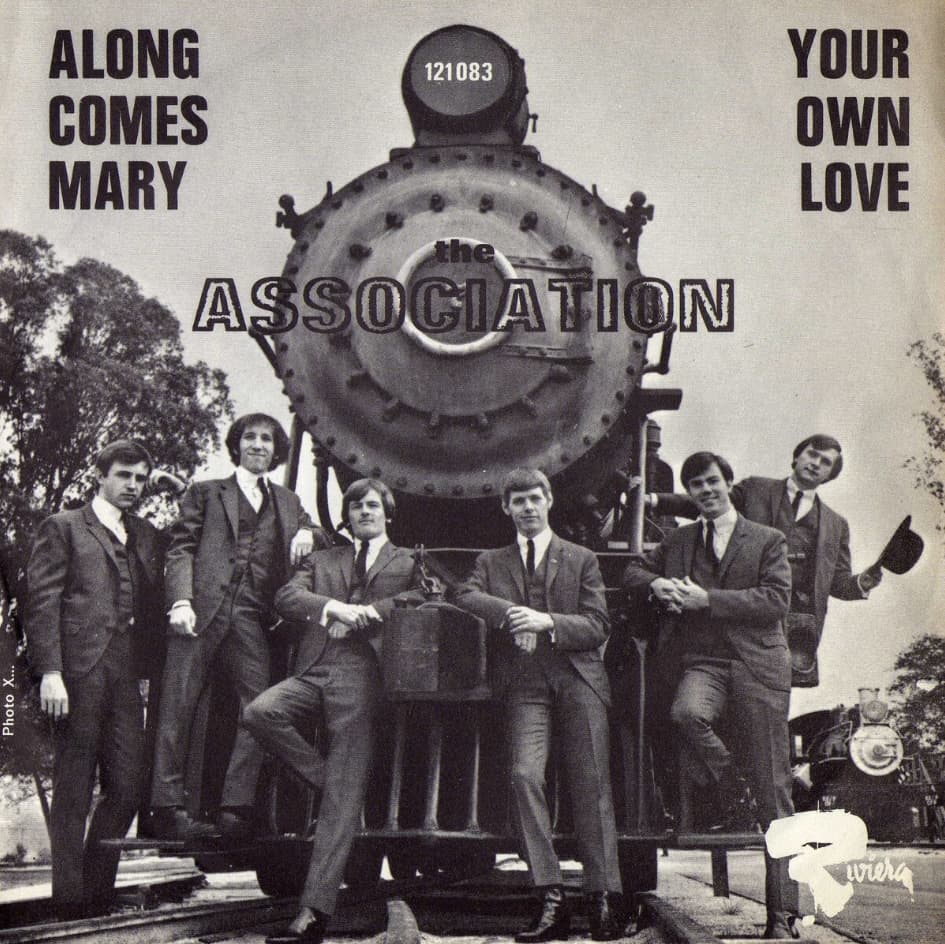
The Association – Along Comes Mary: A Nostalgic Journey Through Love and Longing
In the vibrant tapestry of the 1960s music scene, few songs encapsulate the era’s spirit quite like “Along Comes Mary” by The Association. Released in 1966 as part of their debut album “And Then… Along Comes the Association,” this song became a hallmark of its time, reaching an impressive #7 on the Billboard Hot 100 chart. Its success marked a significant moment for the band, propelling them into the limelight and solidifying their place in music history.
At first listen, “Along Comes Mary” might seem like a simple pop tune, but beneath its catchy melody lies a complex narrative that resonates with themes of love, self-discovery, and existential longing. The song’s lyrics, penned by Tandyn Almer, weave an intricate tale that can be interpreted in myriad ways, inviting listeners to delve deeper into its meaning. For many, Mary represents a muse, an intoxicating presence that brings clarity and purpose to life’s chaos.
The story behind “Along Comes Mary” is as intriguing as its lyrics. Tandyn Almer, who wrote the song at just 22 years old, was a somewhat enigmatic figure in the music industry. Known for his avant-garde approach to songwriting, Almer crafted a piece that defied conventional pop norms with its poetic wordplay and jazz-influenced harmonies. The Association’s rendition of his work transformed it into a hit that captured the zeitgeist of an era defined by cultural upheaval and youthful rebellion.
For those who lived through the 1960s, “Along Comes Mary” is more than just a song—it’s a time capsule that evokes memories of a world on the brink of change. The song’s unique blend of folk-rock and sunshine pop reflects the optimism and uncertainty that characterized the decade. Its opening riff, instantly recognizable and irresistibly upbeat, serves as a siren call back to those days of burgeoning counterculture and shifting societal norms.
Listening to “Along Comes Mary” today can evoke a sense of nostalgia for those who remember hearing it on transistor radios or jukeboxes in dimly lit diners. The lush vocal harmonies, a signature of The Association, create an almost ethereal soundscape that invites reflection and introspection. For older generations, revisiting this track can be akin to flipping through an old photo album—each note conjuring vivid images of youthful exuberance and heartfelt yearning.
The song’s enduring appeal lies in its ability to speak to universal human experiences—love’s transformative power and the quest for meaning in an ever-changing world. Whether interpreted as a metaphorical exploration or taken at face value, “Along Comes Mary” remains a poignant reminder of how certain songs can transcend their era to become timeless classics.
In conclusion, The Association’s “Along Comes Mary” stands out not only for its chart success but also for its ability to capture the essence of a transformative period in history. It’s a song that continues to resonate with listeners across generations, offering both a glimpse into the past and an enduring connection to the present. So whether you’re hearing it for the first time or revisiting it after many years, let yourself be carried away by its melodic charm and lyrical depth—a true testament to music’s power to evoke emotion and memory.